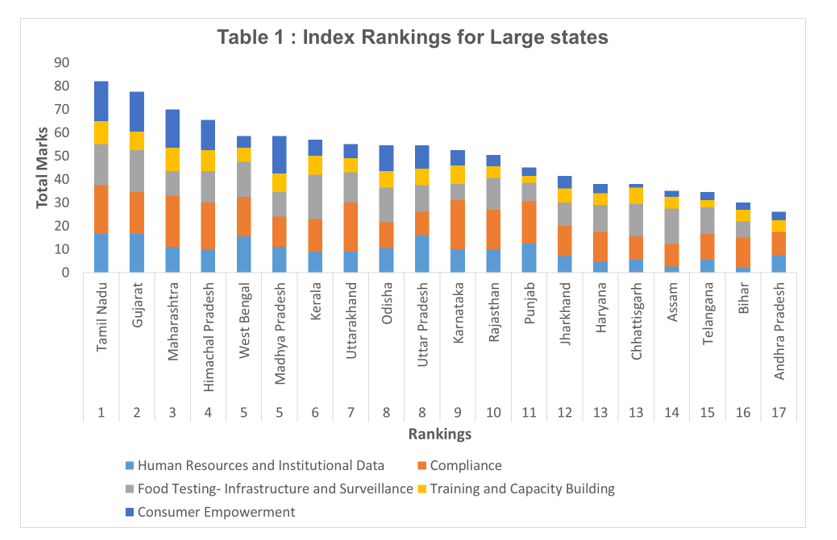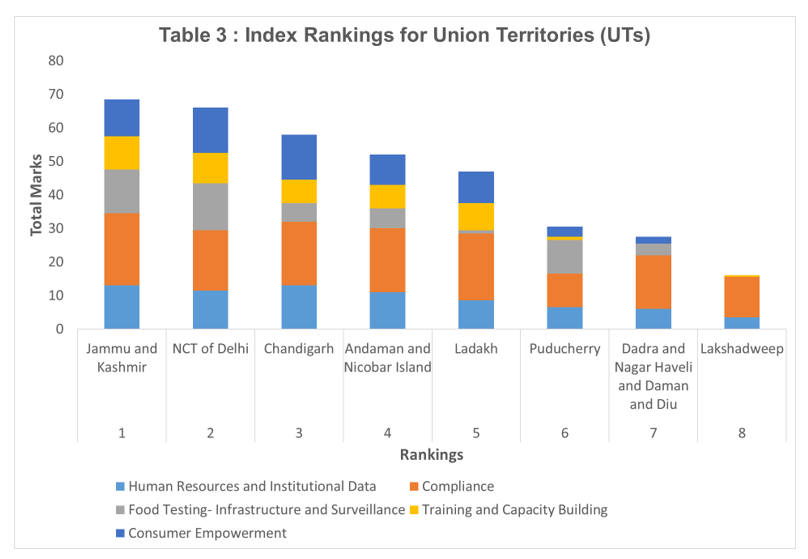On 7th June 2022, the World Food Safety Day, FSSAI published its report on the 4th State Food Safety Index (SFSI) for the financial year 2021-22. The Food Safety Index encourages States/UTs to improve their Food Safety ecosystems and performance.
What is the State Food Safety Index?
It is a quantitative and qualitative model that provides a framework for the evaluation of food safety across all States/UTs. It exhibits the overall performance of the states/UTs on various parameters of food safety.
What are the Food safety parameters evaluated?
The food safety parameters are broadly categorized under the following 5 factors with varying weightages:
a) Human Resources and Institutional Data
b) Compliance
c) Food Testing- Infrastructure and Surveillance
d) Training and Capacity Building
e) Consumer Empowerment
Overall, the evaluations are based on the availability of human resources (Food safety officers, etc), effectiveness in the issue of licenses/registrations, inspections of high-risk food businesses, samples drawn for testing, addressing of consumer grievances, availability of help desks, adequacy of food testing laboratories and trained manpower, utilization of InFoLNet (Indian food Laboratories Network), number of food safety training conducted under FoSTaC (food Safety Training and Certification), availability of trained Food Safety Supervisors in food businesses, participation of the states in FSSAI initiatives like Food Fortification, Eat Right Campus, BHOG (Blissful Hygienic Offering to God), Hygiene Rating of restaurants, Clean Street Food Hubs, ensuring availability of fortified food products and creating awareness among consumers.
How are states/UTs classified for the assessment?
The States/UTs are classified into 3 categories: Large states, Small states and UTs for evaluation and assessment.
How is the assessment done?
The assessment and evaluations are done by a team of FSSAI officials, Food Testing, and Food & Nutrition Professionals. The team examines, verifies, and confirms the data provided by the States/UTs
What are the outcomes of the assessment?
The states are ranked based on their Food Safety evaluation. Here are the results

Amongst the large states, Tamil Nadu ranks the top, followed by Gujarat and Maharashtra. Andhra Pradesh is right at the bottom and has no testing infrastructure

Amongst the small States Goa ranks at the top, followed by Manipur and Sikkim. Most of the difference comes from lack of human resource and institutional data

Among the Union Territories, Jammu & Kashmir ranks the top, followed by Delhi and Chandigarh. The lowest 3 UTs have invested very little on training and capacity building
The states with significant improvement in food safety during the last year are Uttarakhand (Large state), Tripura (Small state) and Ladakh (Union Territory).
Read the complete report here for state-wise ranking statistics.

